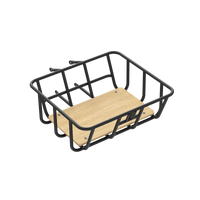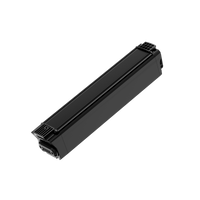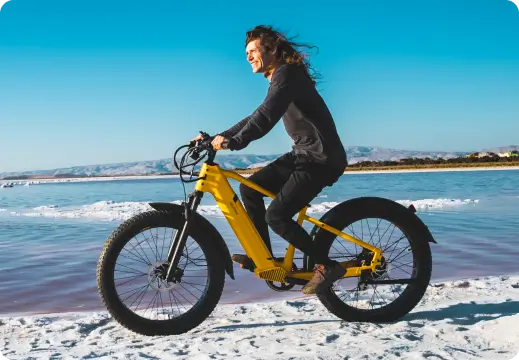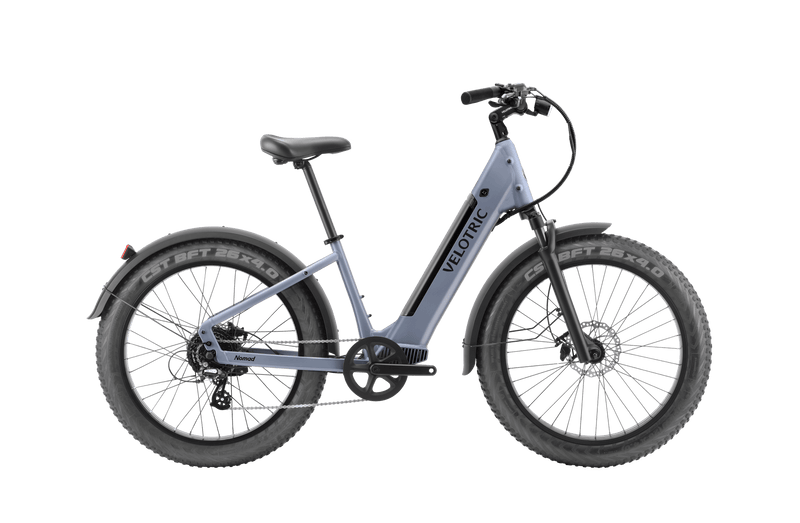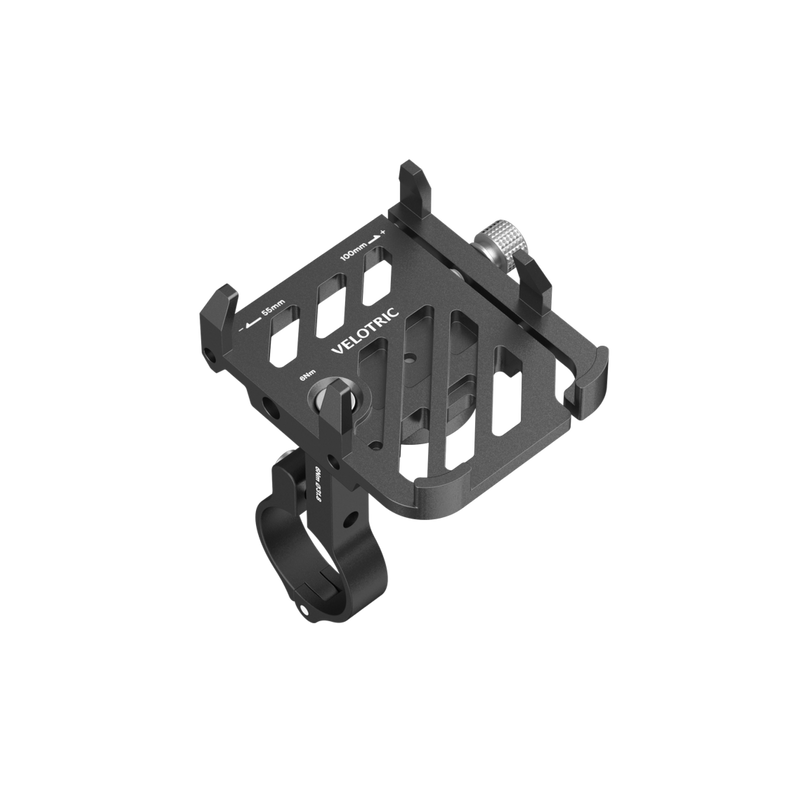Electric bicycles and mopeds are compact, lightweight open vehicles that propel forward with the help of a motor. The main difference is that e-bikes have pedals and can be powered forward solely through the rider’s pedaling. Mopeds lack this distinguishing feature.
E-bikes and mopeds differ in other ways, too, like their size and how they’re regulated. The riding experience is also different depending on the vehicle. Understanding these differences can help you decide whether a moped or e-bike suits you.
E-bike vs. moped: Key differences
If you aren’t sure whether an e-bike or moped is right for you, this guide has you covered. Read on for an overview of the important factors differentiating e-bikes and mopeds.
Electric bicycle
Electric bicycles are two- or three-wheeled vehicles with three key features.
- Motor. The electric motor sets an electric bicycle apart from a traditional bicycle. The motor can support a pedal assist system (PAS), which helps propel the bike forward while you’re pedaling. Some e-bike motors also support throttle assist, which powers the bike forward even when you aren’t pedaling.
- Pedals. While the motor sets an e-bike apart from a regular bike, the pedals are a big part of what sets the e-bike apart from a scooter. If a lightweight open-air vehicle doesn’t have pedals, it’s not considered an e-bike under U.S. federal law.
- The motor won’t allow speeds of more than 20 miles per hour (mph). E-bike motor power is measured in watts — the higher the wattage, the more powerful the motor. A standard e-bike motor won’t exceed 750W. Additionally, to be considered an e-bike, the motor shouldn’t provide “propulsion assistance” at more than 20 mph. This means you can’t have throttle assist solely propelling the bike more than 20 mph. However, you can go faster than 20 mph using pedal assist (or only pedaling).
Be aware that different states have different criteria for what qualifies as an electric bicycle. For example, some states, like California, classify e-bikes into three classes (Class 1, 2, and 3). Other states, like Pennsylvania, don’t distinguish between e-bike classes.
Moped
Mopeds are distinct from e-bikes in a few ways. Here are some of the most important differences:
- No pedals. Most mopeds don’t have pedals. The rider sits on a padded seat, engages the motor, and the vehicle starts moving. There’s no option to power the vehicle forward through pedal power alone, as with an e-bike.
- Heavier. A standard e-bike weighs between 20 and 25 kilograms (about 44 to 55 pounds). Some e-bikes — like mountain bikes or fat tire bikes with larger frames — may weigh more. In contrast, the average moped weighs A LOT more — from 150 to 200 pounds.
- Different motors. Electric batteries power e-bike motors. These removable batteries can be recharged to keep the e-bike motor running. In contrast, mopeds might be electric or rely on gas engines, just like traditional motor vehicles.
- Licensing and registration requirements. Mopeds are more likely to be subject to licensing and registration requirements. While few states require a special license to ride an e-bike, many require a driver’s license or motorcycle license to operate a moped, including Pennsylvania, Texas, and Indiana.
- Insurance requirements. This is another point where mopeds are more like cars than e-bikes. You’ll rarely be required to get insurance to ride an e-bike (although we recommend it). However, many states require liability insurance for mopeds, including Alabama, Nebraska, and Tennessee.
Where can you legally ride e-bikes?
Legal requirements for e-bikes vary between states. While there are some broad federal definitions of e-bikes, many states have their classification systems.
The class of e-bike can determine legal requirements like whether you need to wear a helmet, whether you need a license to ride, whether you need to register or take out insurance for it, and where you can ride your e-bike.
For example, some jurisdictions in Florida, like Sanibel Island, have outlawed e-bikes. Meanwhile, in New York, Class 3 e-bikes are only allowed in New York City — but not the rest of the state.
Where can you legally drive mopeds?
Similarly, moped laws vary from state to state. Every state has regulations regarding licensing requirements, registration requirements, and insurance requirements.
Rules regarding where you can ride a moped vary. For example, you’re usually not allowed to ride a moped on highways. Your local Department of Motor Vehicles (DMV) can provide more details about the rules in your state. For example, driving a moped on the interstate is illegal in Virginia.
What’s right for you: e-bike or moped?
So, which one is best: an electric bike or a moped? It depends on your needs. These pros and cons can help you decide.
Pros and cons of e-bikes
Compared to mopeds, electric bikes offer many benefits. They are:
- Versatile. E-bikes can accommodate all needs, whether you want a commuter bike to get from A to B or prefer a mountain bike for off-roading.
- Good for exercise. An e-bike offers a great workout. For more rigorous exercise, minimize pedal assist and skip throttle assist.
- Eco-friendly. Electric power bikes don’t rely on fossil fuels or contribute to greenhouse gas emissions. This makes them eco-friendly.
- Affordable. E-bikes are cheaper than cars, averaging about $2,000 new (although there are bikes for as little as $1,000). Plus, you don’t have to pay for fuel. Additionally, many states offer rebates to support e-bike purchases.
- Easy to park. Electric bikes don’t require large parking spaces like cars. You can find a bike rack to chain your bike. That means no more circling city streets looking for parking.
- Less administrative requirements. Requirements for licensing, registering, and insuring e-bikes are generally lenient. The exact rules vary between states.
That said, e-bikes have drawbacks too, like:
- Riding restrictions. Depending on the class of the e-bike, you may not be able to ride it wherever you want. For example, Class 3 e-bikes might not be allowed in traditional bike lanes.
- Battery limits. You have to monitor your e-bike’s battery capacity to ensure it doesn’t give out on you.
Pros and cons of mopeds
Mopeds have pros and cons. Some positive aspects include:
- Fast. Mopeds are a bit faster than e-bikes, typically reaching higher speeds of 28 to 30 mph. Most e-bikes don’t exceed maximum speeds of 28 mph with the motor engaged, and for some, the motor doesn’t kick in beyond top speeds of 20 mph.
- Cost-efficient. Mopeds are cheaper than cars. You can get a moped for about $1,000. High-quality and larger mopeds generally range from $3,000 to $10,000. Plus, you don’t have to worry about paying for gas if you get an electric moped.
- Easier parking. Since mopeds are much smaller than cars, you can park them more easily. You don’t have to look for a huge space and can park pretty much anywhere (just make sure it’s legal).
However, compared to electric bicycles, mopeds have some cons. These are:
- More administrative burden. More states require you to license and/or register a moped. Some states also require you to get insurance (such as liability insurance) for a moped.
- Potential carbon emissions. Depending on the moped you get, it may run on fuel or an electric battery. If you get a gas-poweredmoped, you’ll contribute to carbon emissions, negating any environmental benefit.
- Heavier. Mopeds are significantly heavier than e-bikes. While an e-bike might weigh 44 to 55 pounds on average, a moped can weigh three times that much, 150 to 200 pounds.
Discover the best Velotric e-bike options for you
If you opt for an e-bike, Velotric has the bike for you. We’ve got options for cyclists of all kinds. Our Discover 1 model is ideal for everyday commuting, while our fat tire Nomad 1 model is great for rugged riding in the great outdoors.
Velotric’s e-bikes offer all the features you need for a safe and comfortable ride: pedal assist and throttle assist, hydraulic disc brakes, and a high-quality battery certified by Underwriters Laboratories (UL2271). Additionally, the Discover 1 Step-Thru is already UL2849 certified while the Nomad 1 is currently undergoing this certification.























